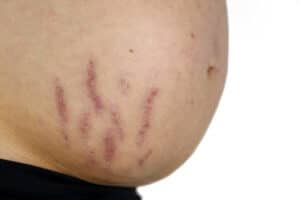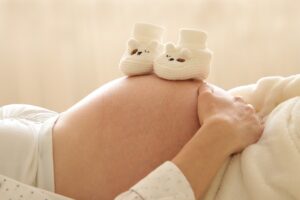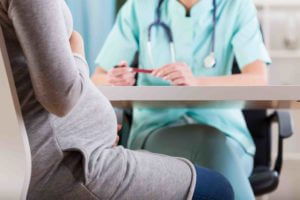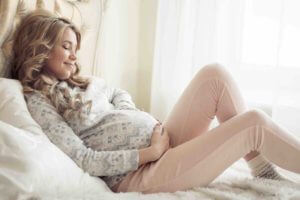Wind egg is the popular name for a certain type of embryonic maldevelopment. Unfortunately, many women are affected by it, often without realizing it. In this article, we explain in detail how a wind egg can occur, what distinguishes this type from other miscarriages, and what it means for a woman who wants to have a child.
Learn everything about the topic of a wind egg here.
Table of contents
How A Wind Egg Is Formed?
A wind egg has a sonorous name. And yet it is a form of miscarriage. What’s more, it often goes unnoticed. Indeed, many women cannot imagine that someone would not notice such a thing.
And yet it happens again and again: a so-called wind egg can come off with a normal menstrual period. This is because it is an embryo whose development was stopped at a very early stage of pregnancy. We can only speculate as to why.
Presumably, nature wants to protect itself from malformations in this way. It could therefore be a kind of selection that no one can influence. Certain risk factors do exist, but they are not always identified as the cause. Some wind eggs develop completely independently of the behavior of those affected.
But we know exactly what happens in the process. After fertilization, cell division occurs as usual. The placenta and amniotic cavity also develop. Only the embryo abruptly stops developing.
Other Expressions For Wind Egg
- Abortive egg.
- Molen pregnancy.
Wind egg is also called nidation disorder because it is one of the disorders that can occur during nidation. This refers to the implantation of the egg in the uterus. Other disorders of this type are ectopic pregnancy or bladder mole.
False pregnancy, often used synonymously, is also different: here the body shows signs of pregnancy, although no fertilization has taken place at all.
The Causes Of A Wind Egg
There are many reasons for a wind egg. Frequently, the lack of supply of the embryo by the villi is emphasized. This is plausible but by no means the only possible cause. Rather, it can be environmental influences as well as disease or poisoning up to transmission errors in the chromosomes.
Anyone who has had a diaper egg in their body several times in a row should have themselves examined by a doctor. In this case, it may be that there is a genetic predisposition and thus an increased risk for a diaper egg.
Likewise, risk factors such as smoking or alcohol promote the risk for a diaper egg. Fortunately, however, the risk of recurrence does not affect every woman who once produces a diaper egg. Many women give birth to a perfectly healthy baby after a diaper egg.
Possible Causes At A Glance:
- Maldevelopment of the villi.
- Maldevelopment of the chromosomes.
- Genetic predisposition.
- Poisoning, also insidious, for example with alcohol.
- Lack of oxygen, smoking.
You Can Recognize A Symptom By These Symptoms
Because it is a normal pregnancy, in the beginning, the female body changes. At the same time, the Winder symptoms do not differ from those of a normal pregnancy. Except for one crucial point, everything happens in the same way.
The female egg is fertilized, then cell division begins and the placenta and amniotic cavity develop. The only difference is that the embryo soon lags in its development. Even more: it stops its development completely.
Thus, there are no specific wind egg symptoms. Therefore, many women do not notice that they are carrying a wind egg. After all, many women are pregnant without developing any signs of it.
If, on the other hand, the woman notices the pregnancy early, even a purchased pregnancy test only reveals the pregnancy itself. This is because it only measures the HCG level, which also increases with a wind egg.
Sometimes even ultrasound cannot exclude pregnancy. This is because it is generally difficult to detect very small babies up to the 6th week of pregnancy. If the image shows only an amniotic cavity and no fetus, this does not necessarily mean anything at this stage.
However, your doctor will know by the eighth week of gestation at the latest. This is because from this time onwards the ultrasound clearly shows the pregnancy. Here the baby is recognizable, as long as it is not a wind egg.
A very rare exception is the corner stool. This is a baby that is not well detected by ultrasound because it nests in an inaccessible niche. It takes another two weeks before it is visible.
This Is The Difference Between A Wind Egg And A Bladder Mole
Due to frequent confusion at this point a few words about the bubble mole: While the wind egg develops an anomaly only after fertilization, this starts much earlier with the bubble mole. Here, the defect already develops during fertilization.
In the case of the wind egg, the placenta forms normally, while the bladder mole leads to growths here. These growths would disturb the function of the placenta in such a way that the development of the embryo is also endangered. What’s more, they may even develop into carcinoma later on.
Thus, a bladder mole is much more dangerous for the affected person than a wind egg. The reason for a bladder mole is a defective development of the chromosomes that later become the embryo. As a result, these cells are completely missing, then this is called a complete bladder mole.
If the cells are present but have errors in the chromosomes, it is called a partial bladder mole. In the latter case, a child might develop, but it would show severe damage. So here, too, nature protects itself from malformations.
However, how this happens has not yet been conclusively clarified. Interestingly, research seems to suggest that Asian women are much more likely to develop bladder moles. Moreover, the majority of those affected are under 17 or over 35 years of age.
Between these two age limits, the risk of bladder mole decreases. In general, this abnormal development occurs much less frequently than the wind egg: a bladder mole occurs in only one in 1000 pregnancies. In addition, the signs are different from those of the vaginal egg: here, rapid growths occur, which are noticeable.
Signs Of Bladder Mole:
- Very high HCG level.
- Dizziness, nausea, vomiting.
- Abdominal swelling.
- Vaginal bleeding.
Depending on the type of bladder mole, the affected person notices it herself because, in contrast to a diaper egg, partial tissue can come off. This then looks like small grapes. Seek medical attention immediately.
A partial bladder mole, on the other hand, is more difficult to detect, and only an ultrasound pregnancy examination can help. This will reveal the absence of heart sounds. But also an increased HCG value outside the usual gives the doctor decisive clues.
What Is The Probability Of Having A Wind Egg?
It is difficult to predict the probability of having a wind egg. Due to the difficulties mentioned above, it is not even possible to prove exactly how many women have been affected by the problem. Generally speaking, an average of five wind eggs develop in every 100 high-risk pregnancies.
Nevertheless, a high number of unreported cases of wind egg must be assumed: Those who become pregnant without any signs of pregnancy often do not notice the final miscarriage.
Exact figures should therefore be treated with caution because they cannot exist. Clear statistics exist only for documented miscarriages: Here, the number that resulted from a wind egg was about one-third.
Wind Egg: When Does The Miscarriage Occur?
Expectant mothers always ask themselves anxiously, when is a wind egg shed? That depends on the individual: Either it soon detaches on its own with bleeding. Alternatively, the attending physician will give medication to assist in the process.
If this does not work, an invasive procedure is performed, the so-called abrasive or scrape out of the wind egg. In this procedure, the doctor carefully scrapes out the uterus and removes the implantation.
This is how it continues: the body must now find its way back to its usual function. This can take a few weeks. Then the signs of pregnancy, such as the increased HCG level, disappear. The normal menstrual cycle also reappears. After that, a new pregnancy is usually possible without any problems.
What Is The Connection Between The Wind Egg And The HCG Value?
As with any pregnancy, the HCG level increases. This hormone indicates that something has changed in the pregnant woman’s body. That is why pregnancy tests work: they measure the HCG level, also known as the pregnancy hormone.
This, in turn, not only indicates pregnancy. The hormone is responsible for several endogenous processes, including ensuring that only one pregnancy occurs in the female body at a time.
The body in which a wind egg nest behaves in the same way. Therefore, a normal pregnancy test from a drugstore or pharmacy cannot diagnose a wind egg.
Wind Egg Recurrence Risk
Therefore, at this point once again very clearly: The risk of repeating a diaper egg is very low! If there is no genetic predisposition, the subsequent pregnancy is often completely normal. Nevertheless, the event is a burden.
Those affected deal with it in very different ways: While many women tackle their desire to have children again as soon as possible, others withdraw. This is understandable, after all, the experience of a miscarriage is associated with grief.
Those who can’t cope on their own should seek professional help, such as psychotherapy.
After A Wind Egg: How To Behave Properly
Now the body must first return to normal. Especially after a curettage, you should be careful with anything that exposes your abdomen to more germs. After all, the cervix is still open, which increases the risk of infection.
Refrain from the sauna, swimming, and sex, among other things! But also sports or the use of tampons are taboo for the time being. Stick to these rules for three to four weeks at the most, and you will soon be able to resume your normal life.
At A Glance: These Are The Things You Should Avoid After A Aaginal Egg Or A Curettage
- Tampons
- Sports
- Sauna, swimming
- Sex
Conclusion: Does A Wind Egg Stand In The Way Of Your Desire To Have A Child?
A wind egg is a rather common form of miscarriage: here the embryo nests in the uterus without developing beyond a certain point. Figures on this are difficult to give due to a high number of unreported cases, but in diagnosed miscarriages, one in three is a wind egg.
The body shows all the usual signs of pregnancy. Therefore, pregnancy tests often react positively if they only examine the HCG value. Only an ultrasound examination of the pregnancy often provides clarity.
Some women do not notice anything at all if the wind egg comes off with regular bleeding. If this does not happen, it must be removed artificially. This is done with the help of medication or by scraping the uterus.
Fortunately, it rarely stands in the way of a desire to have children, unless it is a genetic predisposition. Normally, the affected person’s body simply returns to normal.
This takes a few weeks, after which the couple can try again. After a successful curettage, a grace period of a maximum of four weeks also applies to sex.












